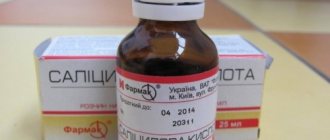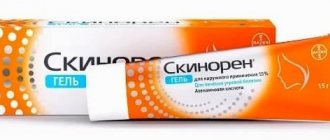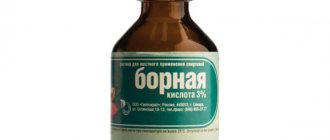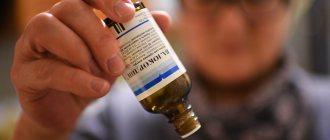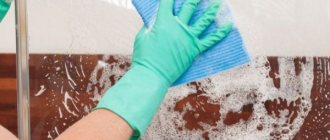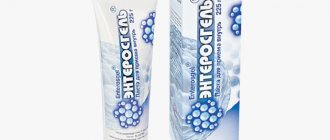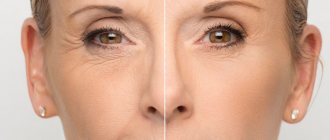Progress in cosmetology does not stop for a minute. More and more effective drugs are appearing on the shelves of stores and pharmacies. However, affordable, proven, familiar means are still popular. Salicylic acid is no exception. It is still at the top of the list among cosmetologists and dermatologists, thanks to its positive effects on the skin.
Properties
Unlike other acids used in cosmetology, salicylic acid is characterized by efficiency and speed of action. Her main abilities include:
- anti-inflammatory, antiseptic effect due to the destruction of bacteria and microorganisms;
- decreased secretion of sweat and sebaceous glands;
- keratolytic (exfoliating) effect by softening, drying and cleansing the skin of dead particles;
- accelerating skin regeneration by increasing blood flow to the damaged area and stimulating cell division;
- improving collagen production (protecting it from destruction).
What is it used for and can salicylic acid help with acne?
Salicylic acid is a low molecular weight, fat-soluble acid. It acts on the surface of the skin, epidermis, dermis, and inside the pores. It is used in various fields of medicine to treat many skin diseases (seborrhea, dermatitis, psoriasis, lichen, eczema, keratosis, etc.).
Salicylic acid and preparations based on it are also successfully used in cosmetology. Thanks to its strong disinfecting and exfoliating effect, it fights skin defects.
Dark spots
This is an area of darker colored skin. It may be the result of genetic characteristics, vitamin deficiency, stress, etc. The effect is achieved through exfoliation and lightening of the skin.
Before and after using salicylic acid
Ingrown hairs
Most often they appear after hair removal procedures (depilation, epilation). Changing the direction of hair growth leads to its ingrowth under the skin and the formation of foci of inflammation. Salicylic acid in liquid form gently releases hair and fights inflammation.
Warts
Salicylic acid is effective due to its softening effect. And the antiseptic effect prevents the appearance of new formations.
Before and after - removal of a wart on the nose
Dandruff
A common cause of dandruff is fungus. Salicylic acid is aimed at combating it. By cleansing the skin, eliminating inflammatory processes and normalizing the functioning of the sebaceous glands, in addition to getting rid of dandruff, volume, shine and accelerated hair growth are achieved.
Black dots
Mechanical treatment of the skin is not always effective, while using salicylic acid on the face cleanses the pores on its own.
Acne
The cause of the defect is increased secretion of sebum, its thickening and accumulation in the pores, followed by inflammation. Salicylic acid for acne is one of the most effective remedies. It is used as an independent product or component of tonics, washes, and lotions. The use of such products will eliminate inflammation, reduce pain, dry out the problem area, and normalize the functioning of the sebaceous glands, which will reduce the likelihood of new rashes.
Before and after - acne disappearance
Features of the course
Completing the course provides a more effective and prolonged effect. Its duration and frequency depend on the area being treated and the severity of the problem:
- facial cleansing - from 5 to 7 sessions every 1-2 weeks;
- treatment of hyperpigmentation - 8 sessions every 14 days;
- fight against hyperkeratosis - about 7 times every 7 days;
- peeling of hands and other parts of the body - up to 5 procedures every month.
How often should the course be repeated - approximately once every six months.
What cosmetic products use salicylic acid?
Due to its properties, salicylic acid is a common component of many skin care products. Salicylic acid can be found in products such as:
- shower gel
- foam
- scrub
- peeling
- tonic
- lotion
- serum
- mask
- cream
- shampoo
- antiperspirant
- local preparations (ointments, creams)
- napkins
- patch
Is it better to use liquid or other form for the face?
On pharmacy shelves you can find salicylic acid in liquid form (solutions with different concentrations), powder and in the form of ointments.
1-2% solutions of salicylic acid are often used for acne and other inflammations. The composition of such liquids, in addition to the main component, includes 70% alcohol.
It is not recommended to use 3-5-10% solutions of salicylic acid for the face at home, as improper use can lead to burns.
The powder can be used to prepare solutions yourself. However, you need to strictly observe the proportions so as not to make a mistake with the dosage and not burn the skin during use.
Ointments are also available in different concentrations (2-3-5-10%). Main components: acid and petroleum jelly. It is recommended to apply 2-3% of the product to the inflamed areas for several days.
Answers on questions
Which is better: salicylic or glycolic peeling?
It all depends on what problem you want to solve. If you need to improve the condition of oily skin, cleanse pores and eliminate inflammation, it is recommended to choose salicylic peeling.
Glycolic exfoliation gives the effect of a tightened and radiant face. The procedure evens out tone, increases tissue elasticity and moisture, and restores youth and beauty. More suitable for dry, thin and aging dermis.
The recovery period after peelings also proceeds differently. The glycol version goes on with virtually no peeling. The procedure allows you to lead a normal lifestyle without dropping out of society during the entire course.
As you can see, each peeling is good in its own way and solves specific problems. Therefore, only a cosmetologist can determine which option is best for your skin.
How often can the procedure be performed and how many sessions will be required per course?
For the face, neck and décolleté area, in general, 8–10 procedures are performed every 10–11 days. On hands, exfoliation is performed much less frequently—once a month. The course consists of 4–5 sessions.
If you need to get rid of pimples and seborrhea, use 15 and 25% formulations once a week. To eliminate pigmentation, peeling is performed with a 25 percent solution every 12–14 days.
Should I expect skin peeling after peeling?
Yes, sure. Salicylic acid has a powerful keratolytic effect, so peeling after peeling is always abundant. This is considered a normal reaction to an irritant and is an indicator of high-quality exfoliation.
Peeling begins on days 2–3 and continues for 4–5 days, sometimes more than a week.
What complications occur after peeling with salicylic acid?
If the rules of post-peeling care are not followed or contraindications are neglected after exfoliation, complications may arise.
Most often, women complain about the following unpleasant moments:
- increased sensitivity of the skin;
- irritation, redness of the epidermis;
- swelling of tissues;
- feeling of dryness and tightness, itching;
- local hyperpigmentation.
With proper post-peeling care, all side effects disappear after 2-3 days. If acute, alarming reactions occur, do not wait three days, but immediately seek qualified help. Relieve allergy symptoms with an antihistamine tablet.
How to properly use salicylic acid products
In order for the product to bring only benefits, you need to know and adhere to the rules of use. The main ones:
- before first use, apply to a small area to identify an allergic reaction;
- choose the concentration depending on your skin type (oily 2%, normal 1%, dry - 0.5% or refrain from using);
- Do not use salicylic acid in liquid form or in the form of ointments with a high concentration of the active substance;
- single inflammations should be treated pointwise;
- Avoid applying to areas with moles, birthmarks, and open wounds;
- When using, do not rub the product into the skin to prevent burns;
- It is advisable not to combine with other means;
- take breaks between courses;
- use the drug in the evening or 1.5-2 hours before going outside to avoid the appearance of age spots from the influence of the sun, wind, and low temperatures.
Patient reviews
The patient from this review notes that after cleansing the skin became very smooth, fine wrinkles and blackheads disappeared, and scars were partially smoothed out. Small rashes appeared, which the cosmetologist warned her about.
The patient from this review considers salicylic peeling a useless procedure. How many times should you take it according to the cosmetologist? This is the course I took. Peeling began only after the 3rd session, each time I felt a strong burning sensation, and the skin became covered with red spots. He notes that after a full course, the face became smoother, but the main problem - acne - was not solved by peeling.
The following patient is completely satisfied with the results of cleansing with salicylic acid. He says that this was the only peeling that helped to effectively tighten pores for a long time. Blackheads were eliminated and the overall condition of the skin improved. She notes that the result lasted for about a month, during which she did not even need to use concealing cosmetics or acne removers.
A patient shares her experience of using StopProblem peeling in this review. He says that after the first application the results are not visible, but with regular use the skin condition improves.
Salicylic peeling is not a panacea, but it can improve the condition of the skin both externally and at the cellular level. To do this, you need to trust an experienced specialist and mentally prepare for unpleasant sensations during and after the procedure. And then the result will be healthy, tightened and clean skin for a long time.

